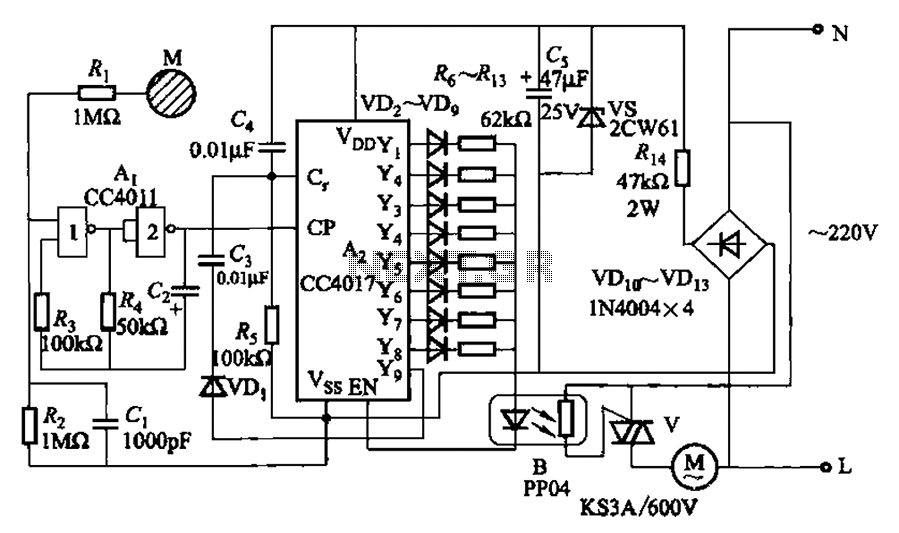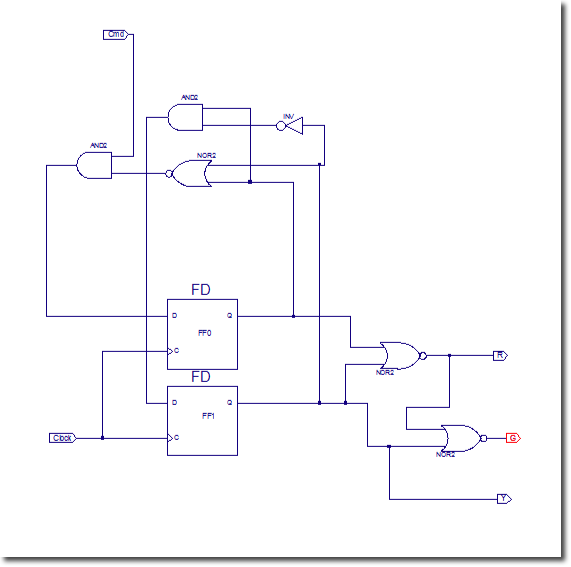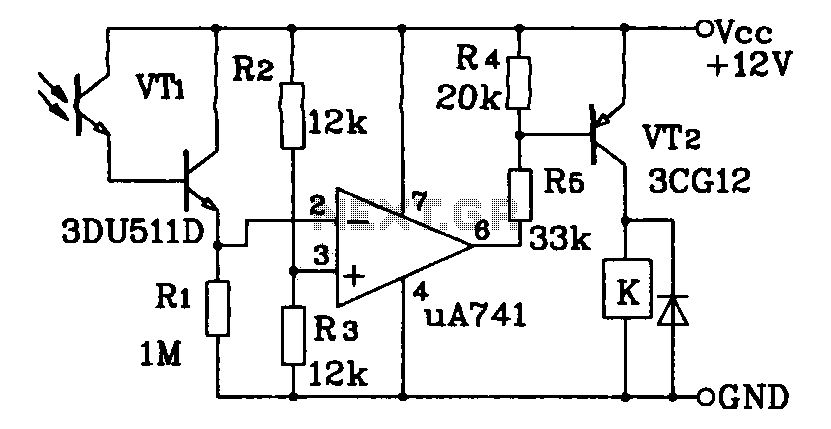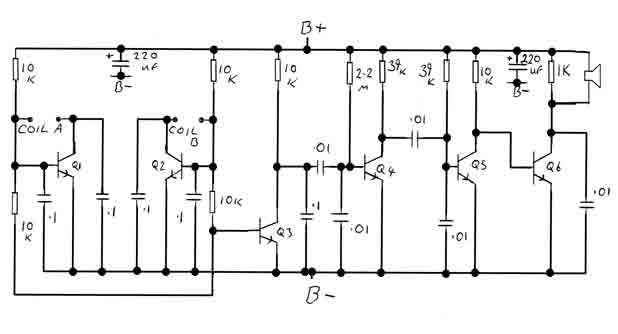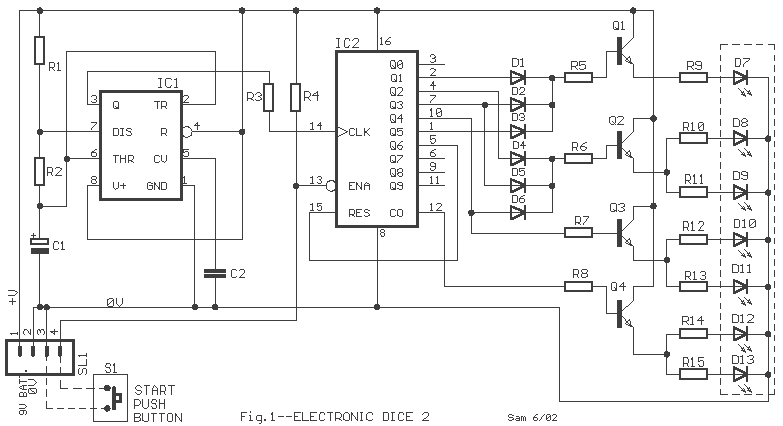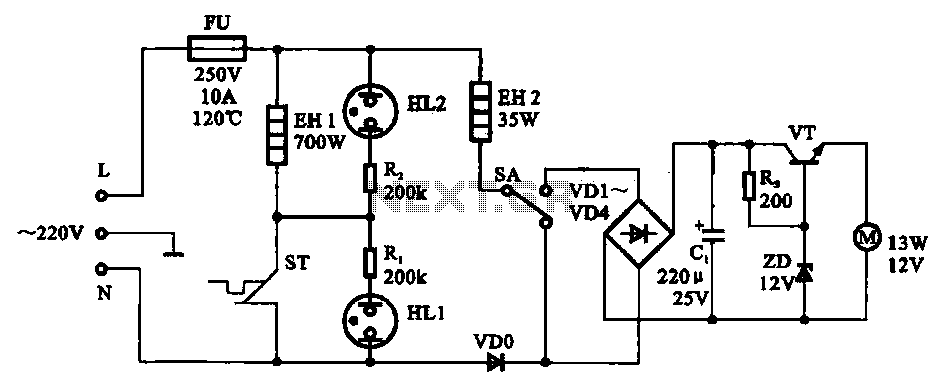
long range fm transmitter circuit
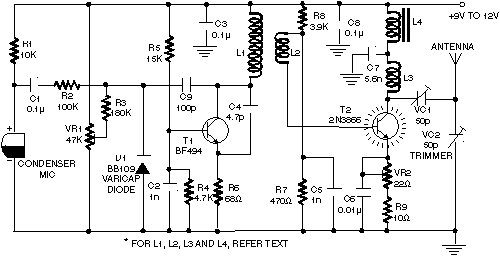
The transmitter described here includes an additional RF power amplifier stage following the oscillator stage, which increases the output power to 200-250 milliwatts. When connected to a properly matched 50-ohm ground plane antenna or a multi-element Yagi antenna, this transmitter can provide a reliable signal strength over a distance of approximately 2 kilometers. The circuit features a transistor T1 (BF494) that acts as a low-power variable-frequency VHF oscillator. A varicap diode circuit is integrated to adjust the frequency of the transmitter and to provide frequency modulation using audio signals. The oscillator typically outputs around 50 milliwatts. Transistor T2 (2N3866) functions as a VHF class A power amplifier, amplifying the oscillator signals by a factor of four to five times, resulting in an output power of 200-250 milliwatts at the collector of transistor T2. For optimal performance, it is recommended to mount the circuit on a high-quality glass epoxy board and place the transmitter inside an aluminum enclosure. Additionally, the oscillator stage should be shielded with an aluminum sheet. Potentiometer VR1 is used to adjust the fundamental frequency, while potentiometer VR2 serves as a power control. For hum-free operation, the transmitter should be powered by a 12V rechargeable battery pack composed of 10 x 1.2-volt Ni-Cd cells. Transistor T2 must be mounted on a heat sink to prevent overheating. The transmitter should not be powered on without a connected antenna. Both trimmers (VC1 and VC2) should be adjusted for maximum output power, and potentiometer VR1 should be set to tune the fundamental frequency close to 100 MHz.
The circuit design begins with the oscillator stage, utilizing transistor T1 (BF494), which is configured in a common-emitter arrangement to achieve variable frequency operation within the VHF range. The inclusion of a varicap diode allows for fine-tuning of the frequency, enabling the transmitter to modulate audio signals effectively. The output from the oscillator is fed into the base of transistor T2 (2N3866), which is configured as a class A amplifier. This transistor is responsible for increasing the power of the signal, with the gain typically ranging from four to five times, resulting in the desired output power.
To ensure optimal signal transmission, the circuit should be assembled on a high-quality substrate, such as glass epoxy, which minimizes signal loss and enhances durability. The use of an aluminum enclosure not only protects the circuit from external interference but also aids in thermal management. The aluminum sheet shielding around the oscillator stage is crucial for preventing unwanted oscillations and ensuring stable operation.
The circuit design incorporates two potentiometers: VR1 for frequency adjustment and VR2 for power control. Proper adjustment of these components is essential for achieving the desired operational parameters. The trimmers VC1 and VC2 allow for fine-tuning of the oscillator frequency and output power, respectively, ensuring that the transmitter operates efficiently.
Power supply considerations are critical; a 12V rechargeable battery pack consisting of 10 x 1.2-volt Ni-Cd cells provides a reliable and stable voltage source. This arrangement not only supports the operational requirements of the circuit but also enhances portability. The heat sink for transistor T2 is necessary to dissipate heat generated during operation, preventing thermal runaway and ensuring longevity.
In summary, this transmitter circuit is designed for effective VHF signal transmission with adjustable frequency and power output. Proper assembly, tuning, and thermal management are essential for achieving optimal performance and reliability in communication applications.The transmitter ambit declared actuality has an added RF ability amplifier stage, afterwards the oscillator stage, to accession the ability achievement to 200-250 milliwatts. With a acceptable analogous 50-ohm arena even antenna or multi-element Yagi antenna, this transmitter can accommodate analytic acceptable arresting backbone up to a ambit of
about 2 kilometres. The ambit congenital about transistor T1 (BF494) is a basal low-power variable-frequency VHF oscillator. A varicap diode ambit is included to change the abundance of the transmitter and to accommodate abundance accentuation by audio signals.
The achievement of the oscillator is about 50 milliwatts. Transistor T2 (2N3866) forms a VHF-class A ability amplifier. It boosts the oscillator signals ½ ability four to bristles times. Thus, 200-250 milliwatts of ability is generated at the beneficiary of transistor T2. For bigger results, accumulate the ambit on a good-quality bottle adhesive lath and abode the transmitter central an aluminium case. Shield the oscillator date application an aluminium sheet. Potentiometer VR1 is acclimated to alter the axiological abundance admitting potentiometer VR2 is acclimated as ability control.
For hum-free operation, accomplish the transmitter on a 12V rechargeable array backpack of 10 x 1. 2-volt Ni-Cd cells. Transistor T2 charge be army on a calefaction sink. Do not about-face on the transmitter after a analogous antenna. Adjust both trimmers (VC1 and VC2) for best manual power. Adjust potentiometer VR1 to set the axiological abundance abreast 100 MHz. 🔗 External reference
The circuit design begins with the oscillator stage, utilizing transistor T1 (BF494), which is configured in a common-emitter arrangement to achieve variable frequency operation within the VHF range. The inclusion of a varicap diode allows for fine-tuning of the frequency, enabling the transmitter to modulate audio signals effectively. The output from the oscillator is fed into the base of transistor T2 (2N3866), which is configured as a class A amplifier. This transistor is responsible for increasing the power of the signal, with the gain typically ranging from four to five times, resulting in the desired output power.
To ensure optimal signal transmission, the circuit should be assembled on a high-quality substrate, such as glass epoxy, which minimizes signal loss and enhances durability. The use of an aluminum enclosure not only protects the circuit from external interference but also aids in thermal management. The aluminum sheet shielding around the oscillator stage is crucial for preventing unwanted oscillations and ensuring stable operation.
The circuit design incorporates two potentiometers: VR1 for frequency adjustment and VR2 for power control. Proper adjustment of these components is essential for achieving the desired operational parameters. The trimmers VC1 and VC2 allow for fine-tuning of the oscillator frequency and output power, respectively, ensuring that the transmitter operates efficiently.
Power supply considerations are critical; a 12V rechargeable battery pack consisting of 10 x 1.2-volt Ni-Cd cells provides a reliable and stable voltage source. This arrangement not only supports the operational requirements of the circuit but also enhances portability. The heat sink for transistor T2 is necessary to dissipate heat generated during operation, preventing thermal runaway and ensuring longevity.
In summary, this transmitter circuit is designed for effective VHF signal transmission with adjustable frequency and power output. Proper assembly, tuning, and thermal management are essential for achieving optimal performance and reliability in communication applications.The transmitter ambit declared actuality has an added RF ability amplifier stage, afterwards the oscillator stage, to accession the ability achievement to 200-250 milliwatts. With a acceptable analogous 50-ohm arena even antenna or multi-element Yagi antenna, this transmitter can accommodate analytic acceptable arresting backbone up to a ambit of
about 2 kilometres. The ambit congenital about transistor T1 (BF494) is a basal low-power variable-frequency VHF oscillator. A varicap diode ambit is included to change the abundance of the transmitter and to accommodate abundance accentuation by audio signals.
The achievement of the oscillator is about 50 milliwatts. Transistor T2 (2N3866) forms a VHF-class A ability amplifier. It boosts the oscillator signals ½ ability four to bristles times. Thus, 200-250 milliwatts of ability is generated at the beneficiary of transistor T2. For bigger results, accumulate the ambit on a good-quality bottle adhesive lath and abode the transmitter central an aluminium case. Shield the oscillator date application an aluminium sheet. Potentiometer VR1 is acclimated to alter the axiological abundance admitting potentiometer VR2 is acclimated as ability control.
For hum-free operation, accomplish the transmitter on a 12V rechargeable array backpack of 10 x 1. 2-volt Ni-Cd cells. Transistor T2 charge be army on a calefaction sink. Do not about-face on the transmitter after a analogous antenna. Adjust both trimmers (VC1 and VC2) for best manual power. Adjust potentiometer VR1 to set the axiological abundance abreast 100 MHz. 🔗 External reference
